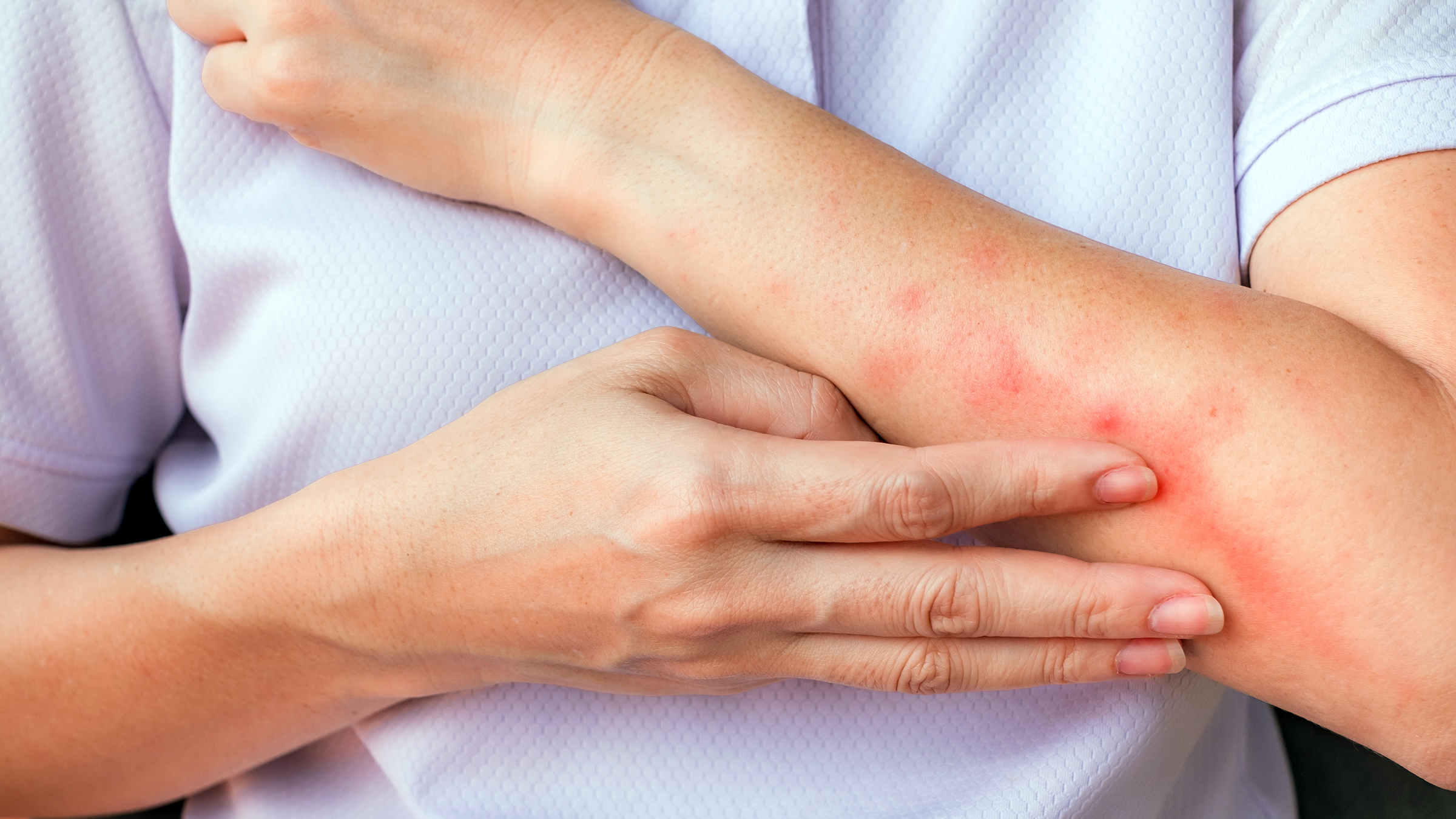
6 Bedbug Bite Treatments That Will Banish Stubborn Itchiness
Key takeaways:
Bedbug bites are small, raised skin bumps that appear in a zigzag pattern. They aren’t dangerous, but they’re very itchy.
Steroid ointments and antihistamines are the most common bedbug bite treatments. They relieve itchiness and swelling.
Scratching bedbug bites can lead to skin infections. Over-the-counter and prescription treatments can control itching, so you don’t accidentally give yourself a skin infection.
Table of contents
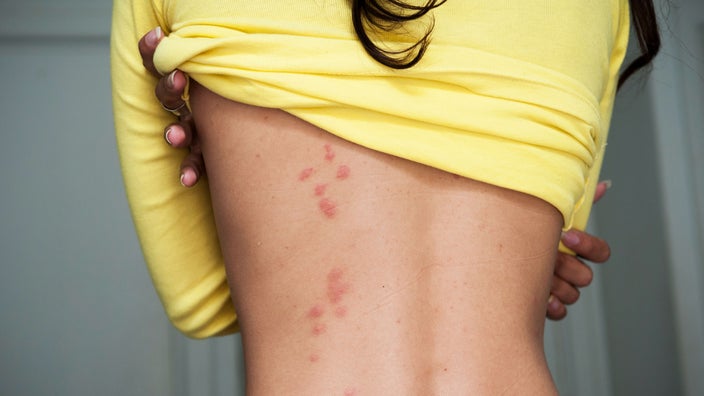
For most people, just hearing the word “bedbug” is enough to make them feel itchy all over. Bedbugs are pests that hide during the day but come out at night and bite — a lot. Bedbug problems can happen to anyone, and they can be very difficult to get rid of. Adult bedbugs can survive for a long time without a meal and are good at hiding in tight spaces during the day.
Bedbugs are great hitchhikers and they like to follow people. They travel from one location to another in luggage, or on clothing. If you find them in your house, they likely came from another location, like a hotel, public transport, or someone’s house.
While they don’t lead to any long-term medical problems, they’re extremely itchy. And, having a bedbug infestation can make you lose sleep. It’s a horrible feeling going to bed knowing you’ll get bitten.
Getting rid of bedbugs can be a long and involved process. While you’re working on that, here are some treatments that can help relieve your symptoms.
What do bedbug bites look like?
Before you reach for treatments, you want to make sure your bites really are from bedbugs. On fair skin, bedbug bites look like small, red raised bumps. In darker skin tones, bites can look brown, violet, or skin-colored. When they heal, they may leave brown marks that can take months to fade (post-inflammatory hyperpigmentation).
One way to tell bedbug bites apart from other types of bug bites is to take a look at how the bites are grouped together. Bedbugs usually bite more than once as they move across the skin, which causes a linear or zigzag pattern of bites. These are sometimes called “breakfast, lunch, and dinner” bites).
Another way to tell is by looking at where the bites are on your body. Bedbugs can bite anywhere on your skin, but most often, they bite on your neck, legs, arms, and back. One key clue: Bedbugs can’t bite through clothing. So bedbug bites will only affect skin you didn’t cover during the night.
Some lucky people don't develop a reaction to bedbug bites — but that doesn’t mean they aren’t getting bitten. These people may be able to see a tiny hole in their skin from the bite if they look very closely. But they won’t develop itchy, red bumps.
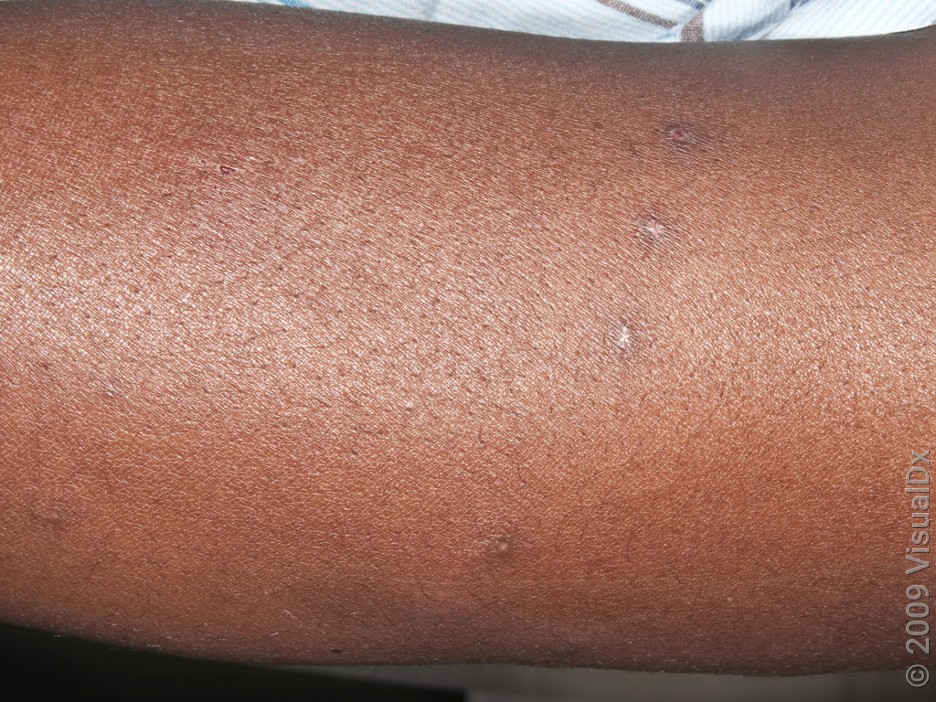
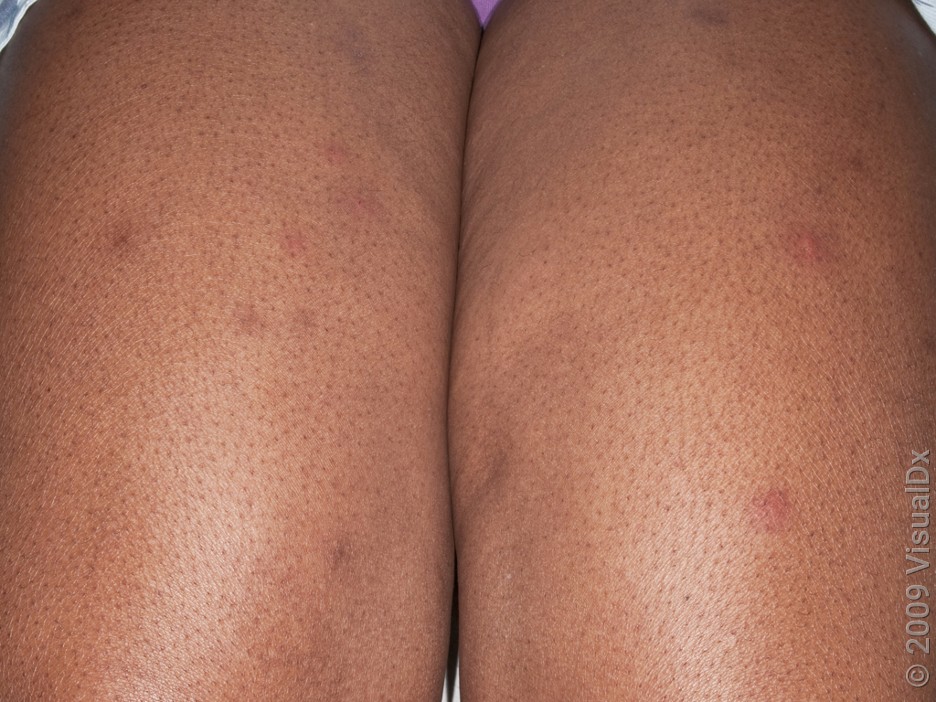
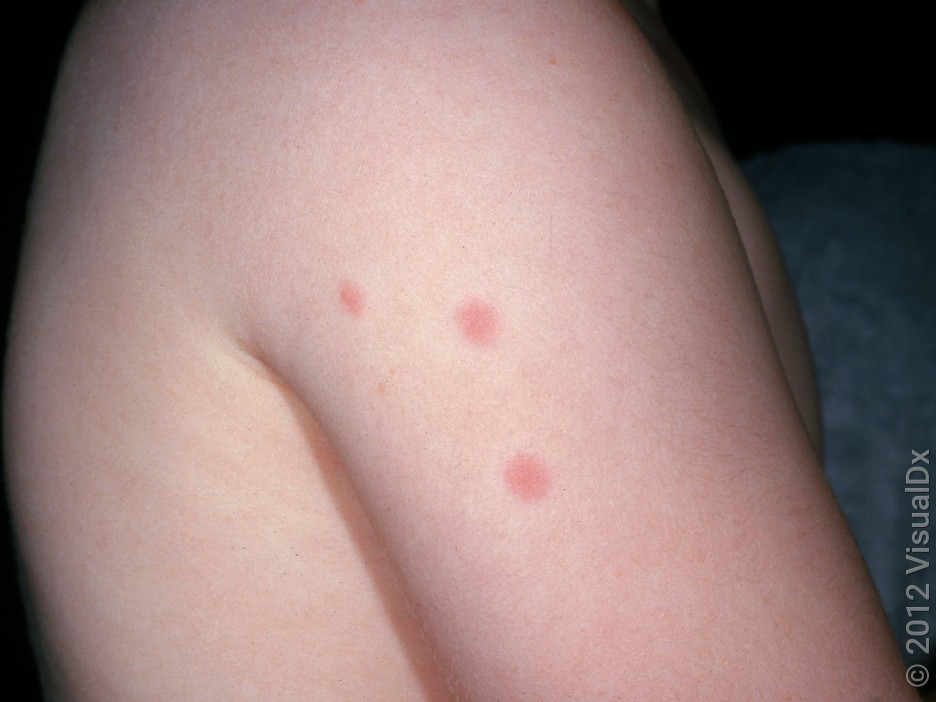
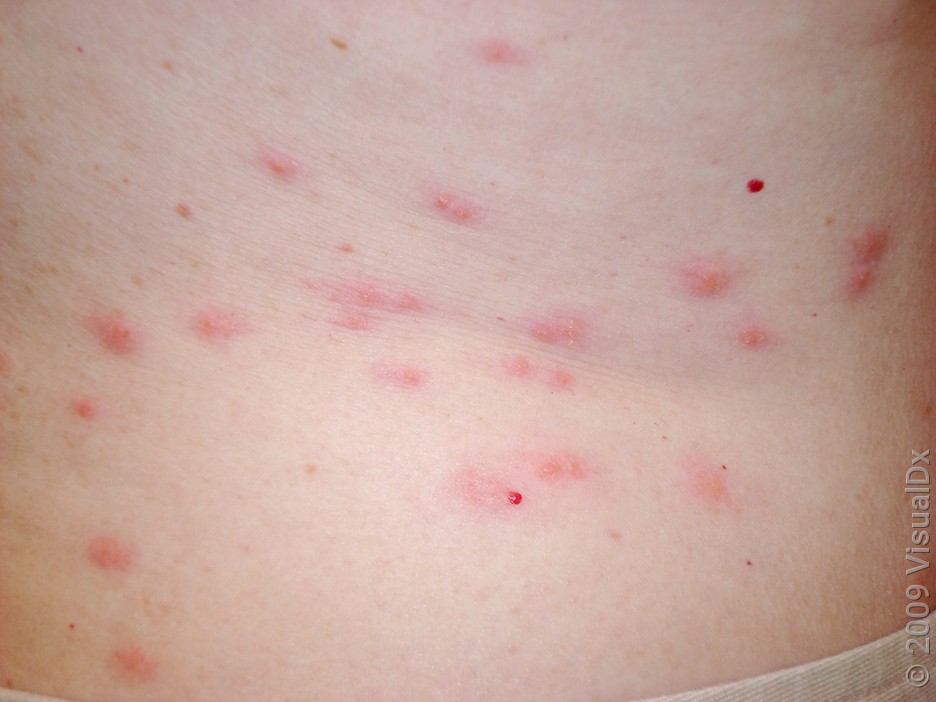
How can you check for bedbugs?
You won’t see bedbugs on your skin, but your bed, sheets, and mattress seams may show telltale signs. Here are some tips for where to look and what to look for:
Look for bedbugs in the folds of sheets, mattress, and couch seams, as well as in between cushions, where the wall and ceiling meet, and in curtain folds.
Rust or red-colored stains on your sheets are caused by crushed bedbugs.
Watch out for tiny dark spots from bedbug fecal matter.
Look for yellow exoskeletons (outer skin) that bedbugs shed as they grow.

WHAT TO READ NEXT
What are the most effective bedbug bite treatments?
There’s no treatment that will instantly get rid of bedbugs or bedbug bites. Your body will react to the bite with inflammation (redness, swelling, itching), and then this reaction will go away over time.
But bedbugs don’t live on your body, so there’s no medication that can remove them from your skin, like with scabies or lice.
Fortunately, there are treatments that can relieve itchiness and prevent skin infections. Here are six treatments that can keep you comfortable while you heal.
1. Soap and water
There’s always a risk of infection with any itchy skin condition, including bedbug bites. That’s because scratching at bites can create small breaks in the skin that allow bacteria to enter. This can lead to an infection of the skin.
To lower your risk of infection, use soap and water to wash any area that has bedbug bites. You don’t need to use special antibacterial soap — any regular soap will do.
Keep the area as dry as possible. You want to avoid swimming and water activities if you have a lot of bedbug bites. It’s also a good idea to avoid hot tubs and saunas. You can still work out and play sports, but make sure to shower and change out of sweaty clothes as soon as possible.
2. Steroid ointments
Topical steroids can relieve itchiness, redness, and swelling from bedbug bites. Steroids are available as creams and ointments. Creams may contain alcohol and other irritating ingredients that can burn when applied to bites. If possible, stick with an ointment that doesn’t contain these ingredients. Here are some options to try:
Hydrocortisone, which is available over the counter (OTC)
Triamcinolone and other higher-strength steroid ointments are available with a prescription. They may be a better option if you have large bites or if hydrocortisone doesn’t seem to help.
You can use steroid ointment once or twice a day for up to 4 weeks. Over time, steroids cause irreversible thinning of the skin. To minimize side effects, apply it sparingly and avoid sensitive areas like the face.
3. Antihistamines
When you get a bedbug bite, your body releases histamines near the bite. This creates the feeling of itchiness. Antihistamine medications block the activity of histamine and help reduce itching. Antihistamines and steroids are usually used together to treat bedbug bites.
Antihistamines are available in oral and topical forms. It’s a good idea to stick with the oral forms, especially if you have multiple bites. Taking a pill will relieve itchiness all over your body and save you the effort of applying a second treatment on severa parts of your body. Here are some options to try:
Diphenhydramine (Benadryl) is an antihistamine that’s available OTC in pill or liquid form. You can take diphenhydramine up to four times a day to relieve itchiness. But it can cause unwanted side effects, like drowsiness.
Cetirizine (Zyrtec) and loratadine (Claritin) are newer antihistamines and they may be a better option. They’ll also work against itchiness and are available without a prescription. You only need to take these medications once a day, and they won’t cause drowsiness.
4. Cold compresses
Cold compresses help relieve itchiness by slightly numbing the affected area. Try taking a cold shower or rinsing the skin under cool water.
You can also make a cold compress at home by applying a cool, wet cloth to the skin. Or you can use an ice pack wrapped in a towel. You can use cold compresses for up to 20 minutes and repeat every 2 hours as needed.
5. Cotton clothes
Synthetics and materials like wool can irritate the skin and worsen itchiness. Until your bites heal, switch to breathable fabrics like cotton. And stick to loose-fitting clothing. Even breathable fabric can worsen itching if it’s constantly rubbing against the skin.
6. Oatmeal baths
Oatmeal baths are a great way to soothe irritated skin. They can help lower itching and lock in moisture, which helps the skin repair its natural barrier. You can make your own oatmeal bath or buy premade oatmeal baths in supermarkets or pharmacies.
Run your bath with lukewarm water. Hot water can irritate and dry out the skin, which will cause more itchiness. You only need to sit in the bath for 10 to 15 minutes to enjoy the soothing effects.
How long does a bedbug bite last?
It takes about a week for bedbug bites to heal. If after a week you’re still itchy or you notice new marks, then you’re probably getting new bedbug bites.
To avoid getting more bites, you’ll need to take steps to get rid of bedbugs, like washing your bedding and soft furnishings at high heat, using a mattress cover, and contacting a professional.
How can you prevent bedbug infestations?
It’s impossible to completely prevent bedbugs. Many people have them at some point in their lives. But there are some steps you can take to make a bedbug infestation less likely:
Check for signs of bedbugs when you stay in a new place (like a hotel or rental).
When traveling, keep your suitcase and other belongings off the floor and away from the bed or other soft furnishings.
Regularly wash your bedding and soft furnishings on high heat.
Eliminate clutter in your home so bedbugs don’t have hiding places.
Vacuum your bedroom frequently, including your mattress and upholstered furniture.
Check secondhand furniture or bedding carefully before bringing it into your house
If you use shared laundry facilities, bring home laundry in a plastic bag and fold clothes at home.
The bottom line
It can be stressful to discover that you have bedbugs in your home. Bedbug bites can be very itchy and uncomfortable. And they can interfere with your sleep. Fortunately, bedbug bites rarely cause significant health problems. Treatments like cold compresses, topical steroids, and oral antihistamines can help you deal with the itchiness from bedbug bites while you deal with the underlying infestation.
Images used with permission from VisualDx (www.visualdx.com).
References
American Academy of Dermatology Association. (n.d.). Bedbugs: Diagnosis and treatment.
Centers for Disease Control and Prevention. (2017). Bed bugs.
Gabros, S., et al. (2022). Topical corticosteroids. StatPearls.
Goddard, J., et al. (2009). Bed bugs (Cimex lectularius) and clinical consequences of their bites. Journal of the American Medical Association.
Patterson, I., et al. (2023). Bed bugs. DermNet.
NHS Inform. (2021). Itchy skin.
Shim, W-S., et al. (2008). Histamine-induced itch and its relationship with pain. Molecular Pain.
Thomas, I., et al. (2004). Bedbug bites: A review. International Journal of Dermatology.
U.S. Environmental Protection Agency. (2023). How to find bed bugs.
U.S. Environmental Protection Agency. (2023). Top ten tips to prevent or control bed bugs.




